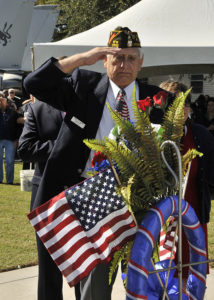 When we look at the longstanding history surrounding the treatment of war veterans in VA hospitals, the focus has traditionally been on encouraging vets to come together in support groups to share their war stories. The long held belief was that the repetitive processing of these painful experiences, done in the presence of other soldiers who related to and shared the same traumas, would be both therapeutic and healing for them. This practice continued despite the fact that so many veterans seemed to remain plagued by relentless symptoms of PTSD manifested in paralyzing flashbacks, substance abuse, social isolation, survivor guilt, marital discord, self-destructive behaviors, affect dysregulation, domestic violence, depression, and suicide.
When we look at the longstanding history surrounding the treatment of war veterans in VA hospitals, the focus has traditionally been on encouraging vets to come together in support groups to share their war stories. The long held belief was that the repetitive processing of these painful experiences, done in the presence of other soldiers who related to and shared the same traumas, would be both therapeutic and healing for them. This practice continued despite the fact that so many veterans seemed to remain plagued by relentless symptoms of PTSD manifested in paralyzing flashbacks, substance abuse, social isolation, survivor guilt, marital discord, self-destructive behaviors, affect dysregulation, domestic violence, depression, and suicide.
Thanks to people like Bessel Van der Kolk, our eyes have been opened to a whole new way of working with war vets. The more he witnessed the “speechless terror” and frozen dissociation of trauma, the more he realized that “fundamentally, words can’t integrate the disorganized sensations and action patterns that form the core imprint of the trauma.” Any clinician who works with trauma agrees and understands that helping clients put words to their experiences is vitally important. Clients need to cognitively make sense out of their trauma and they need compassionate witnesses to hear and validate their experiences. However, we now know that talk alone is not enough. In fact, if we limit treatment to talking while keeping clients physically immobile, we run the risk of exacerbating the trauma by rekindling it neurologically, reactivating the flight/fight/freeze state, and not allowing the body to move through and complete the experience. Van der Kolk understood that a large part of trauma connects to physical feelings of being trapped, disempowered, and helpless. Therefore, it makes sense that healing could be achieved, in part, through moving! This way of thinking was also corroborated by clinicians like Peter Levine, Pat Ogden, and Babette Rothschild.
Thanks to the research of these and other body-based therapists, more and more VA’s are recognizing the importance of incorporating yoga, EMDR, EFT, breath work, movement therapy, meditation, and art therapies into treatment. Working “bottom up” rather than “top down” has become an essential reframe. The first step in healing is to teach vets how to safely reconnect with their bodies and to manage the emotional or somatic overwhelm that occurs when they begin to go to trauma-based emotions or cognitions. This major paradigm shift in the arena of treating war veterans provides invaluable insight for all trauma specialists. Whether you work with war veterans, or clients whose trauma occurred in the battlefields of their homes, integrating “talk therapy” with movement as well as the other aforementioned right-brain based creative modalities has become the new gold standard for trauma treatment in our field. As we continue to learn from the clinical improvements in the vets who are courageous enough to try these newer modalities, it gives us yet another reason to be grateful for their service to our country.

